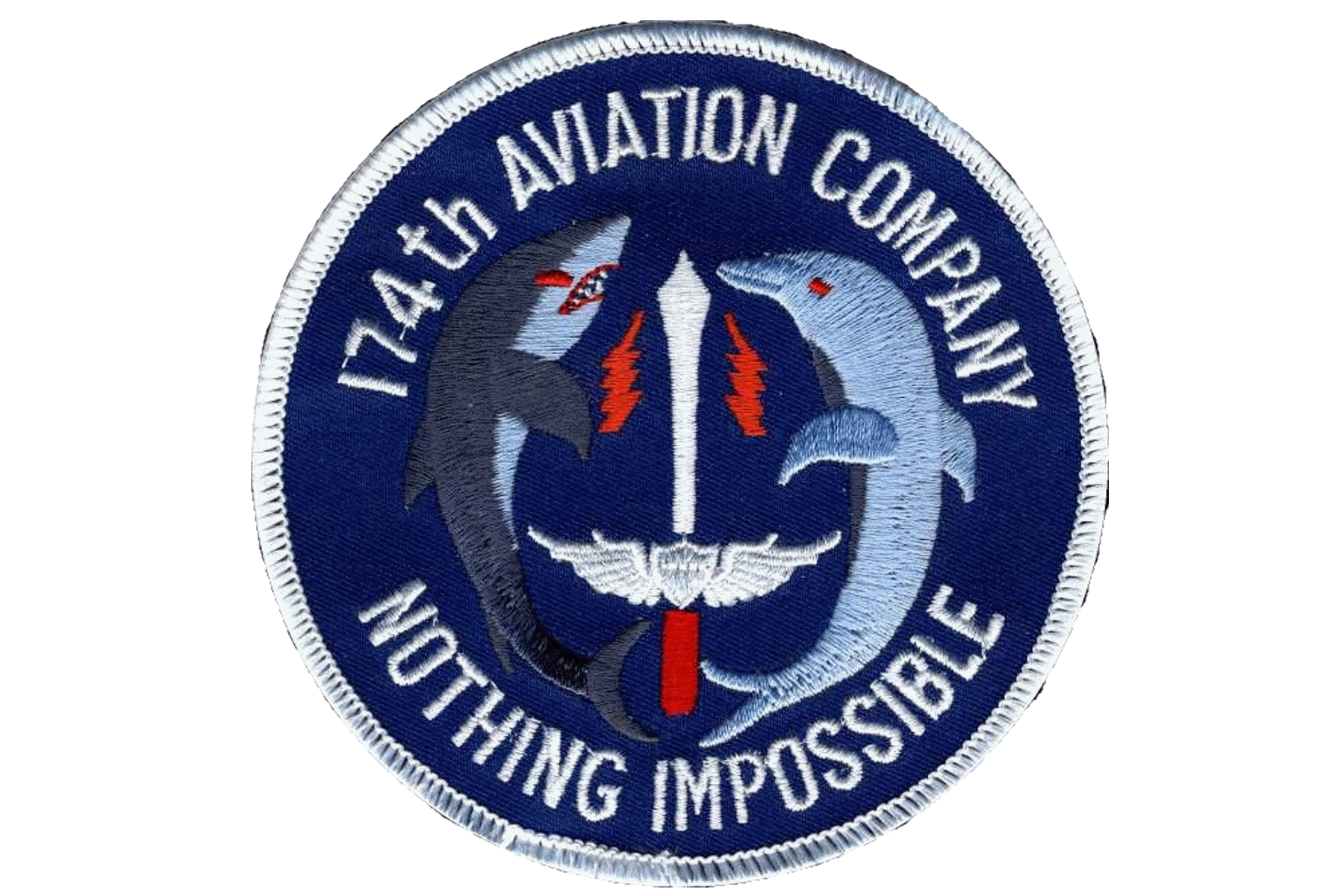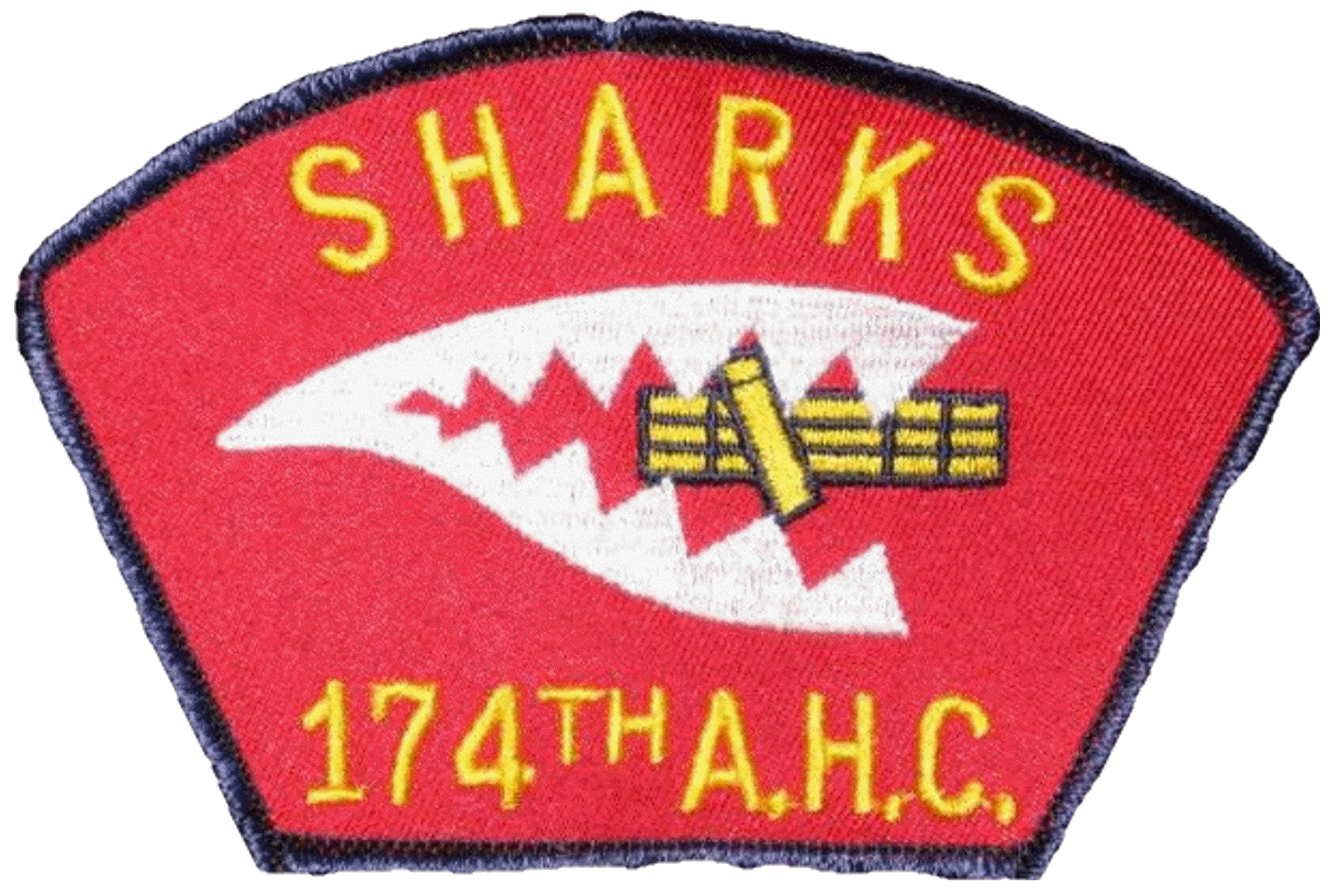TIDBITS OF HISTORY
174th Assault Helicopter Company
1965 - 1966
(Submitted by Bernie Cobb)
* * * * * * * * * * * *
The Beginning
I was a major in 1965, and as I was sitting at my desk at Forney Army Airfield, Ft. Leonard Wood, MO., fat, dumb, and happy, I was awaiting orders to attend the U.S. Army Command and General Staff College at Ft. Leavenworth, Kansas. My orders arrived one day, but they weren’t to Ft. Leavenworth as expected. I was ordered to Ft. Benning, GA, for three weeks training and “further deployment.”
I knew that meant I was to go to Lawson Army Airfield, check out in the Huey, and get my butt to Vietnam. It was November 1965.
HOW Many Field Grades?
I arrived at Ft. Benning and discovered that only one other major had checked in. He was Major Robert Stuart. Because Bob outranked me, he was to become the first Commanding Officer of the 174th. I automatically became the first Executice Officer, at least informally, but as the rest of the 23 (count ‘em) majors poured in over the next couple of days, I was “demoted” from that job in a wild, wild game of musical chairs.
Within a couple of days, we were all moved to some buildings which we could call our own. The officers were billeted in temporary BOQ’s. The first night that we moved into the BOQ, we found ourselves fairly remote from the mainstream of the post. But immediately across from our BOQ was the NCO Class VI store (the liquor store).
Major Jim Shrader and I, along with a couple of other officers, walked into the package store and asked to buy some “supplies.” We were told by a young woman behind the counter that it was an NCO store, only, and we couldn’t buy there. Someone in the group, not me, sweet-talked that young lady right out of her U.S. Army regulations, and we all walked out with a good supply of booze.
A day or two after we settled in, we learned--much to our dismay--that we would be there for about six MONTHS instead of the 3 weeks we had anticipated. We had not been able to bring our families with us, so we were in for a long stretch as geographical bachelors at Benning before we even began our year in Vietnam. NOT good!
Leadership Assignments
To create order out of the chaos created by 23 (more or less) majors on board, Major Stuart called the most senior majors into the orderly room and proceeded to make permanent unit assignments.
I use the word chaos with tongue-in-cheek. Once we resigned ourselves to the temporary “hold” on our career patterns, we all actually saw what a good position we were in. We were going into combat with some already combat experienced pilots, not to mention some ground combat-seasoned soldiers. We were, we told ourselves, “loaded with talent and experience.”
Because of date of rank, Bob Stuart was the CO. Major Mel Tate became the first “real” Executive Officer. I think that Major Ray Kangas became the Service Platoon Commander, but my memory may not serve me well there. I’m not totally sure.
That left the flight platoons to be decided.
Major Stuart asked who wanted to be the gunship platoon commander. He glanced at Major William Callanan, who pointed out that he had just left his wife and SEVEN children at Ft. Rucker. Bill didn’t think it would be the right thing for him to volunteer for that job. I said that I wanted it and, with my date of rank prevailing, the question was immediately settled. I became the first Shark 6.
The next assignment went to Major Henry Rust Jr. as a slick platoon commander. I forget who the other slick platoon commander was.
MAJ James Shrader became Operations Officer and Major Walter Payne was assigned as Assistant Operations and Intelligence Officer. I believe that Callanan became our Supply Officer (am not completely sure), but almost immediately he had to go to the hospital at Benning for a hemorrhoid operation. I don’t know whether there was any connection between that and his job as supply officer. Ulcers maybe--but hemorrhoids??
CPT John Heilmann arrived a while later to become our flight surgeon.
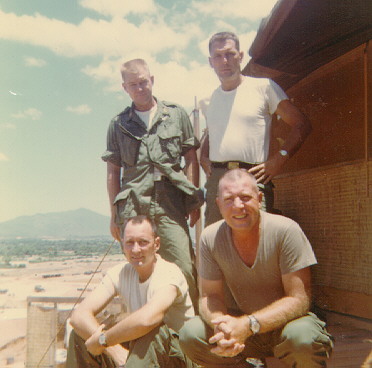 Some of the FOUNDING FATHERS of the 174th Assault Helicopter Company
Some of the FOUNDING FATHERS of the 174th Assault Helicopter Company
Standing left to right: Major Walt Payne and Major Jim Shrader
Sitting left to right: Major Bernie Cobb and Major Bob Stuart
This photo was taken at Lane AHP in 1966 outside the first hootch
built on the 174th side of the hill. Enlargements of the four people
here are included in the text below. (Photo property of Bernie Cobb)
Our First Sergeant was Marvin Hill. I was to see Sergeant Hill several months later at Ft. Rucker, after I had bought a couple of riding horses for my family’s recreational pleasure. Marvin was our local farrier (that’s someone who shoes horses, you city dudes).
Night Formation Training at Benning
Our individual transition into the UH-l’s was uneventful. But I do recall our first full-blown night operation as a unit. Late at night, we all took off from what I remember to be a parade ground at Ft. Benning near our group headquarters. Within a few short minutes, I recall seeing the running lights of numerous helicopters all around me and seemingly criss-crossing in front of me.
I was absolutely petrified! I actually began looking forward to Vietnam and facing such simple little things as getting shot at rather than dying in a mid-air collision on a night training mission at Ft. Benning, Georgia.
Administrative Leave
A lot of things took place in the next few months that I either had no knowledge of or immediately put out of my mind. One of my fonder memories at Benning was the time lapse between when we finished formal training and our departure date. One delay after another gave us a lot of idle time. To help take the sting out of being away from our families, most of us were allowed to go home on “administrative leave.” It was free time without it being charged against our accumulated leave time. Sometimes, while at home, we would just call in and often told not to report back on the specified date because of another delay.
So, back to the fridge for another cold beer.
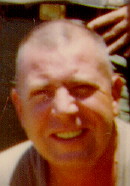 Major Robert Stewart, DOLPHIN 6
Major Robert Stewart, DOLPHIN 6
The 174th's first Commanding Officer
Deployment
I forget the date when we did actually leave, but it was sometime in March 1966. We were bussed to the commercial airfield at Columbus (Muskogee Airport?) and flown to Oakland, California. There, we went directly from the busses onto the ship. (Would you believe it? I can’t remember the date. The ship was the USNS Upshur.) There were two helicopter companies on board--the 174th and the 175th (amazingly enough). They had formed their unit and undergone training at Ft. Benning the same time we did.
Shore Leave at Pearl Harbor
Our first stop was at Pearl Harbor. Some of the officers took three or four Navy nurses, who were also passengers on board, to a downtown club. Even though it was late morning, as I recall, or maybe early afternoon, they proceeded to drink some terrible concoction where the bartender filled up a stein full of different liquors. As the other patrons sipped their drinks, the bartender kept filling the glasses of the rowdy helicopter pilots to the brim with beer. The glasses never got empty, only watered down. Four hours later, they--our guys and the nurses--were “poured” back on the ship.
I had stayed on the base at Pearl. A small group of us went to the Pearl Harbor Officers Club where we proceeded to do our own share of drinking, albeit a little more sensibly. At the end of our four hours, we all agreed that we would get sick if we tried to double time on foot back to the ship.
Captain Petersen (don’t remember his first name), a non-drinker, ventured into the bar to check how we were doing. We “coerced” him into calling the Navy motor pool and ordering us a sedan. He properly identified himself as “Captain Petersen,” a visiting officer who needed transport back to his ship. A sedan came immediately and took us all back to the dock, even though the driver was truly miffed when he saw that Captain Peterson was in the Army and not the Navy, and equal in rank only to a Navy lieutenant.
Word of that little trick did get back to our troop commander, but nothing was done about it. The Navy was glad we were gone, and what was the Army going to do? Ship us to Vietnam?
The most hilarious event we witnessed during that stopover happened just as the gangplank was being removed so the ship could get underway. Everyone who could stand on their own two feet was lined up at the rail to watch the crew cast off. Just as the gangplank was being moved, a battered old car, totally overloaded with laughing, singing and hollering people, came racing onto the dock. We found out later that it was a wedding party... of one of our own!
One of our enlisted crewmen had come to Benning from Hawaii, where he was engaged to a Hawaiian girl. He had promised to marry her during our stop at Pearl Harbor and he did. The ceremony was brief, we understand, and the party got drunk and wild quickly. His “new family” literally tossed him onto the gangplank, which had already been unhitched, and he made in on board just in time to keep from becoming a deserter.
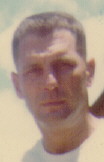 Major Jim Shrader
Major Jim Shrader
The 174th's first Operations Officer
The Trip Resumes
A couple of days back out to sea, the ship’s captain finally realized that some of the drunks on board weren’t sobering up as fast as they should. That meant there was contraband on board. Alcohol in the hands of soldiers while under way was strictly taboo. So, being the gentleman sailor that he was, he gave us a complimentary warning that a shakedown would take place in a few hours. Needless to say, a lot of booze got guzzled down during that time and the remainder, sadly enough, went through the portholes into the drink. We were “clean” when the inspection took place.
Ashore at Qui Nhon
My first sense of alarm, when we dropped anchor just off shore in the harbor at Qui Nhon, South Vietnam, on 7 April 1966, were the underwater explosions. I first thought we were under some sort of attack. We were finally told that our own Navy crew was purposely dropping explosive charges over the side to keep evil-doers away from the ship’s vulnerable bottom-side. We were shuttled to shore by some small landing craft, and with no time to explore or even appreciate our first look at a Viethamese city, we were unceremoniously bussed to Lane Army Heliport.
Then on to Lane
Lane was a new U.S. Army Heliport in the An Son valley, less than 10 miles to the west of Qui Nhon. My first look at Lane, our new home, was disheartening to say the least. Only a few tents had been pitched, but at least we had some immediate shelter. The 161st Aviation Company was on the opposite side of the hill, and they welcomed us into their little club. We felt at least partly civilized, and we appreciated their hospitality.
I had been warned about scorpions, but my first brush with danger came the day after our arrival. After noon chow, I was lying on my cot and I heard some guys shouting. I raised up on my elbow to see them running in my direction. Just in front of them was a snake scurrying in my direction. It slithered right into my tent, under my bunk and, fortunately for me, kept on going. We did have our share of scorpions later on, though, but initially my concerns certered around snakes. At times I thought I should have been Scorpion 6 rather than Shark 6.
Transfer to the 14th CAB
When the 174th first arrived in Vietnam, we were assigned to the 52nd Combat Aviation Battalion, headquartered in Pleiku. We remained under the 52nd Battalion from April until June 1966, when we were reassigned to the 14th Combat Aviation Battalion. The 14th Battalion had been in Vietnam since October 1964 and had been originally headquartered in Nha Trang, south of Qui Nhon. It moved to Qui Nhon in March 1966 and finally settled at Lane. Lieutenant Colonel Sam “Black Sam” Kalagian was the new battalion commander when we were assigned to the 14th in June 1966.
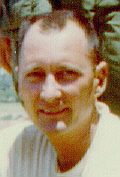 Major Bernie Cobb, SHARK 6
Major Bernie Cobb, SHARK 6
The 174th's first gunship platoon leader
FIRE ONE!!
While our unit was slowly becoming operational, I flew some missions with the 161st Aviation Company gunships, callsign Scorpions. One of those flights was almost a disaster even before the bird ever got cranked up. I was standing on the ground just outside the copilot’s door. I had reached inside to get the flight log and stepped back about one pace. The 161st pilot was leaning in through the pilot’s door checking switches. Suddenly, one of the 2.75-inch rockets fired from the rocke pod on my side while I was standing in front of the pod! It whizzed past, between myself and the chopper, went completely through the stacked sandbags in front of the bird, and exploded when it impacted a nearby hill.
“Sorry ‘bout that,” was all the pilot could say. “No sweat,” I answered through quivering lips.
174th’s First Casualty
Our first casualty in the 174th, shortly after our arrival, was Captain Arthur Wright. He is listed as having died on 17 May 1966. He was flying in a gunship at the time, but my memory tells me he was flying on a 161st Scorpion and not a 174th Shark. I don’t remember the details. (Webmaster’s note: We still have no specifics on Captain Wright’s death. Anyone having details please e-mail the webmaster with information.)
The ROK’s
The 174th was primarily assigned to support the ROK’s (Republic of Korea) and the 22nd ARVN (Army of Vietnam) Division. Jim Shrader has a picture of himself and Walt Payne with the commanding generals of those two divisions. (Webmaster’s note: Hey Jim, please share them with us. Send me an e-mail note. We’ll work the logistics.)
More Night Training
Our first night training mission had me quite concerned, reminding that horrible night formation experience at Benning. I wasn’t disappointed! As we were approaching a mock LZ (landing zone), and all guns went hot, I again got puckered up because of what seemed like a million lights flashing all around us and criss-crossing in front of me in the lead gunship . This time it wasn’t running lights, it was tracers. Real bullets! Afraid at this point we were not yet accustomed to the real bullets. But again, we survived!
The House in the LZ
I was rapidly becoming “snake bit” with practice missions, meaning I was growing very wary of them, and I wanted to get on with the real thing. One of our biggest early operations was north of Qui Nhon. The entire company went into an LZ that had a big house in it. I recall going in with two teams of Shark gunships, one two-gun team on each side of the Dolphin slicks. With the slicks between our two daisy chains, I made my first combat gun run on that house.
My co-pilot was a Lieutenant White (again, the first name is gone) who had been shot in the leg while flying a gunship with the 161st. He was recuperating outside his hooch at Lane when I first saw him. He was later returned to flight duty and assigned to me as my co-pilot.
As far as I was concerned, that first gun run in actual combat had to be a personal success for me, as well as for the unit. I wasn’t just a combat pilot now. I was the leader of a well-trained, mature, team of pilots, crew chiefs, and gunners. On top of all that, I had a co-pilot who was also a combat seasoned gunship pilot who had already been shot during a combat mission.
But I digress... I made my run, straight and true, to the target. We were all firing our rockets and machine guns (I believe White was firing the 40mm grenade launcher on the nose turret). The house, which supposedly had been a base for VC, got bigger and bigger. I was determined to keep on target.
Then, unceremoniously and almost timidly, Lieutenant White simply said, “I think we had better pull up now.”
I had been warned in training about tunnel vision and target fixation. I don’t know if that’s what I had or whether I was just determined not to pull up too soon and be labeled gutless, but I almost drove my helicopter through the roof that day.
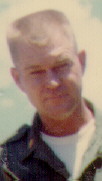 Major Walter Payne
Major Walter Payne
The 174th's first Intelligence Officer
and Assistant Operations Officer
Frustrations
One of my major frustrations of flying gunships in Vietnam began haunting me early on. Some of the 174th Dolphin resupply slicks kept taking sniper fire while landing at a remote Korean outpost north of Qui Nhon. We escorted some of them in with our gunships. But of course when we were along, no one fired on the supply ships. They only fired at unescorted ships.
One day, I told Jim Shrader that I was frustrated because our gunships couldn’t zap those snipers, and before long they might actually down one of our slicks. I proposed that someone with a radio go into the outpost on the first supply run one morning and spot the snipers when the later resupply ships arrived. Two gunships would be actually in the air but hidden behind a nearby hill until needed. When the snipers went into action, our gunships could be alerted from the ground and attack the position almost immediately.
Jim acknowledged that it might work and asked who would be available in the gunship platoon for such a mission.
“Me,” I said. He gave me the green light. I took my gunner, with radio, and we flew in the back as passengers in the first slick to the outpost the next morning. We went out to a suitable site overlooking an area situated between the ocean and the ROK outpost.
A couple of our resupply slicks flew in and out without incident. Then, I spotted what appeared to be a full squad of VC (Viet Cong) coming in over the dunes from the ocean. They took up a position under some palm trees. When the next slick came in, the VC began firing. I contacted the two Shark gunships, still orbiting but hidden behind the hill.
Bob Jones and Dick Overhamm were the two Shark pilots. I spotted the VC site for them and they got the kill--twelve VC dead.
Jim Shrader wrote me up for the Bronz Star with “V” device for that. I later received it at Pleiku. The 17th Aviation Group commander, Colonel John Marr, presented it to me with the remark that he had given out a lot of Air Medals and Distinguished Flying Crosses, but that this was the first time to his knowledge that a pilot had gotten a medal for ground action while a member of the 17th Aviation Group.
One night the Sharks went out to neutralize a known VC unit on a hillside north of Qui Nhon. I recall that being a very successful mission. I put in Bob Jones and Dick Overhamm for the Distinguished Flying Cross after that mission. (I never did find out if they got it or not.)
My Leaving the 174th
My operational days were about to come to a halt, more or less, as far as flying missions were concerned. I had shot up my share of trees and some plantations, and even some bad guys. But one day, (the late) Major Hank Rust came into the hootch where I was sitting with Jim Shrader and Walt Payne. Hank pointed at me and said, “I’ll salute you, but,” pointing to Jim and Walt, “I’ll be damned if I’m going to salute you two.”
That was Hank’s way of saying that the promotion list for Lieutenant Colonel had just been published. I was the first in line for promotion with Hank right behind me, then Jim and Walt. All of us had made the list!
I was happy with the news, but it meant that I was to be immediately transferred out of the 174th.
I went temporarily to the 14th Aviation Battalion headquarters at Lane, as “special assistant” to Lietenant Colonel “Black Sam” Kalagian. He informed me right up front, though, that he had a hand-picked man arriving soon to be his Executive Officer (XO), but that he would find me a suitable job elsewhere. Fair enough.
He did. I wound up at the 52nd Combat Aviation Battalion at Camp Holloway, Pleiku, where I was the Deputy Airfield Commander for Lieutenant Colonel Foy Rice. Later I became the 52nd Battalion XO for Lieutenant Colonel Paul Smithey.
The Death of Bill Callanan
Major Bill Callanan was the S-4 (Logistics Officer) at the 52nd when I arrived. He had been transferred earlier from the 174th in a DEROS adjustment. (Webmaster’s note: DEROS was “Date of Expected Rotation (or Return) OverSeas,“ and a DEROS adjustment of DEROS shuffle was the transferring of people in one unit when it had many of them with similar rotation dates to other units, and the infustion of new personal with different rotation dates. This was common early on when entire units came over together, and the purpose was so a unit wouldn’t loose all it’s experienced people at the same time--after a year.)
During an emergency flight operation one day, when some special forces troops were getting the hell kicked out of them out west of Pleiku, I was ordered by LTC Rice, who was in the field flying C&C (Command and Control) with the battalion, to immediately form a flight of remaining helicopters at Holloway, using all available staff officers as pilots, and begin resupplying the special forces troops with ammo and plasma. Most of the only helicopters available were on the maintenance ramp awaiting repairs. We began that ill-fated mission with seven flyable birds, and every one of them dropped out for one reason or another during the day. Mine was first out when we lost transmission oil.
Major Callanan was flying as aircraft commander and his copilot, CPT (Eugene?) Smith, was his Assistant S-4. On final approach to Camp Holloway at the end of the day, Callanan was ordered to return to the original assembly area and recover the Assistant Operations Officer and radio operator, who had inadvertently been left behind. On landing at that site, at dusk, Callanan and Smith are believed to have experienced vertigo, or at least were blinded by a swirl of dust. They hit the ground hard and the blades flexed down through the cockpit, partially decapitating both Callanan and Smith and killing them both instantly.
Not only did Callanan leave behind his wife and seven children, but CPT Smith had already received his orders to return to the States in just two weeks, the normal end of his tour. He left behind his widow and a new baby he had never seen.
So, as far as 174th history is concerned, Bill Callanan was one of the original members of the 174th at Ft. Benning and served with the 174th during the initial phase of operations at Lane. Smith was not a 174th member.
This tragic accident triggered a new policy within the 52nd Battalion, and maybe elsewhere as well. Henceforth, any crew member within two weeks of rotation back to the United States was exempt from flying operational missions.
The 174th was not involved in that mission where other casualties also occurred. I include it here because Bill Callanan was an original Dolphin, as was Hank Rust who died of a heart attack at the 17th Aviation Group headquarters in Nha Trang.
I returned safely home in March 1967 and was assigned to Headquarters, U.S. Army Aviation Center, Ft. Rucker, Alabama, where I became Deputy DCSLOG (Deputy Chief of Staff for Logistics). Guess you could say I was a “deputy-Deputy.” I retired from active duty on New Year’s Eve, 1967.
My final hours in the army were in the Officer’s Club at Ft. Rucker, enjoying a gala New Year’s Eve party. A fitting end, wouldn’t you say?
A final footnote: One good thing happened that night. At the stroke of midnight, I kissed my wife, Janet, put out my cigarette, and poured out the remainder of my drink. A few minutes later I ordered another drink, but I haven’t smoked a cigarette during the 27 years since.
Bernie Cobb
New Brockton, Alabama
shark6@adelphia.net
|





![]() Return to top of: 1966 photos page.
Return to top of: 1966 photos page.![]() Return to top of: Home Page.
Return to top of: Home Page.